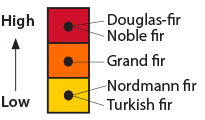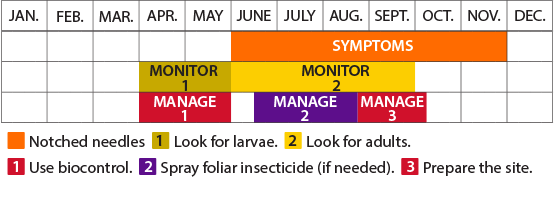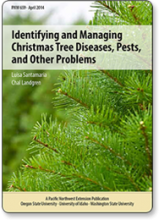Otiorhynchus spp. and other species
- Reduced plant growth
- Yellow needles and premature needle loss and/or root damage
- Scalloping or notching along needle margins
- Legless larvae grubs that bend their bodies in the shape of the letter “C”
- Root problems
- Environmental stress
- Monitor for adult weevils beginning in late May and early June, especially under needles, on cloudy days and in the evening.
- Scout for larvae on the roots of host plants April to May.
- At the first appearance of adults, apply chemical control and repeat.
- In the summer and fall, use habitat disruption practices such as disking or tilling, which may reduce populations.

- High susceptibility: Douglas-fir, Noble fir
- Medium susceptibility: Grand fir
- Low susceptibility: Nordmann fir, Turkish fir

- Look for notched needles: June through October
- Look for Larvae: April through May
- Look for adults June through September
- Use biocontrol: April through May
- Spray foliar insecticide (if needed): Mid-June through Mid-August
- Prepare the site: Mid-August through Mid-October


